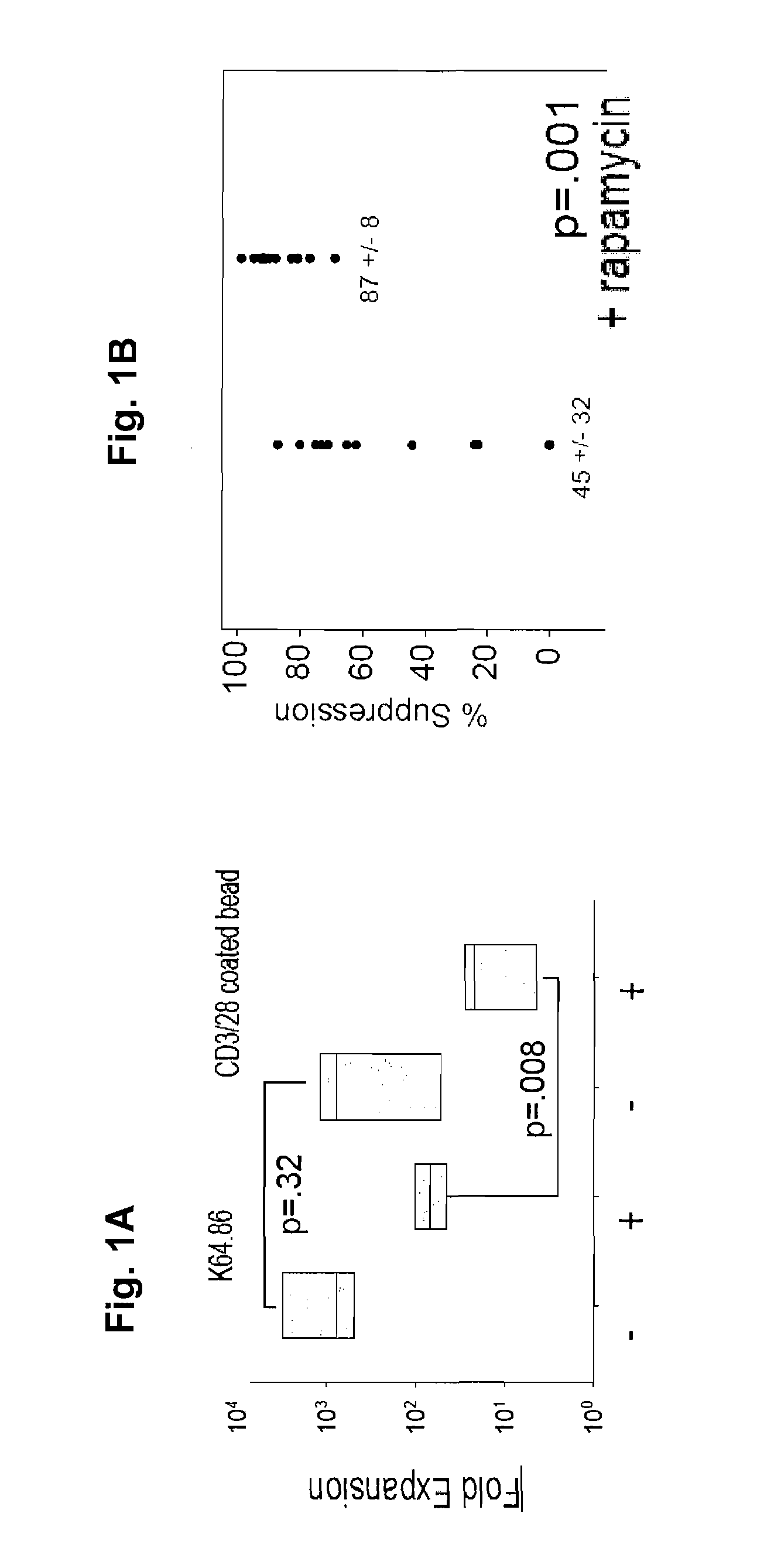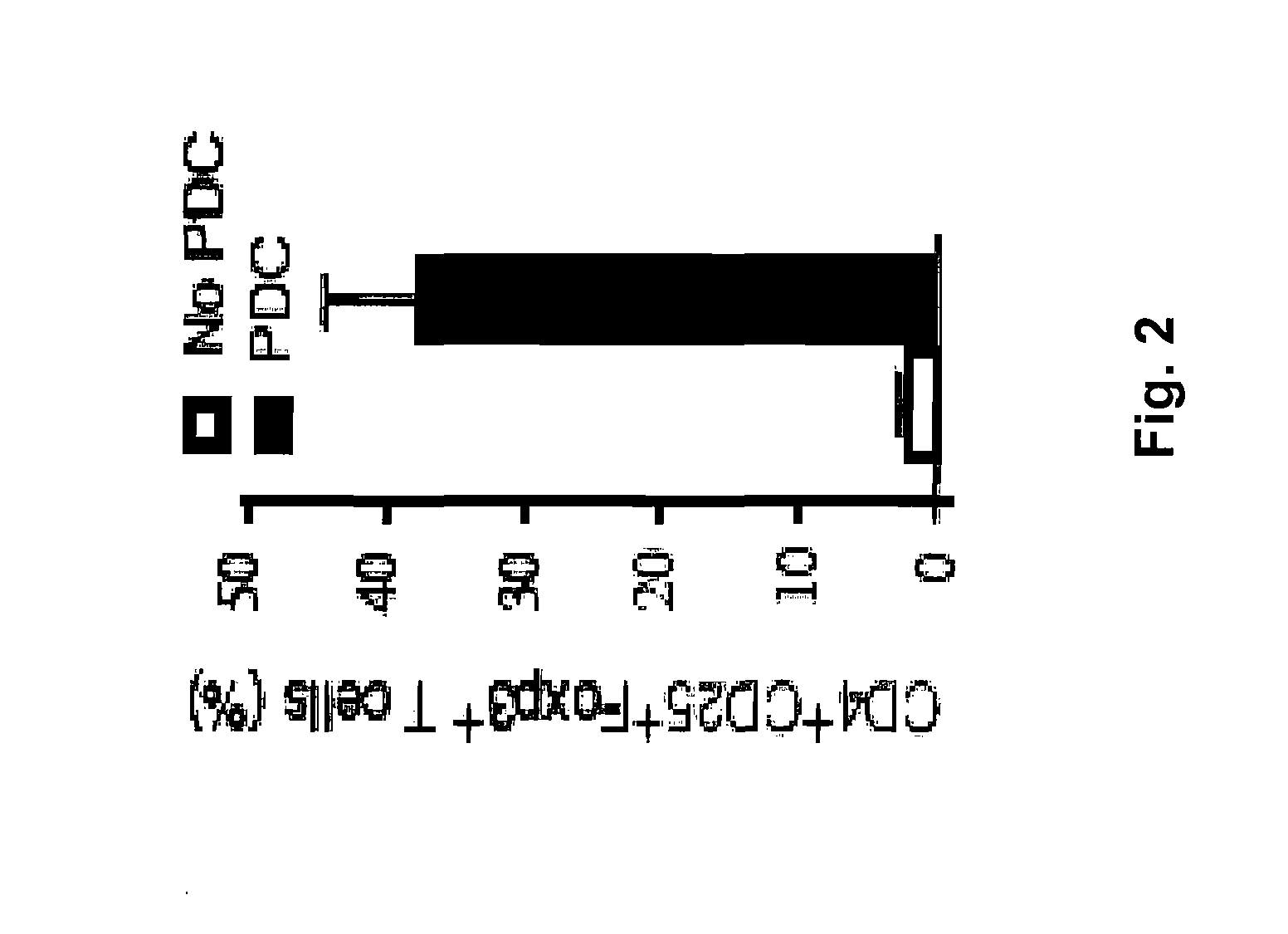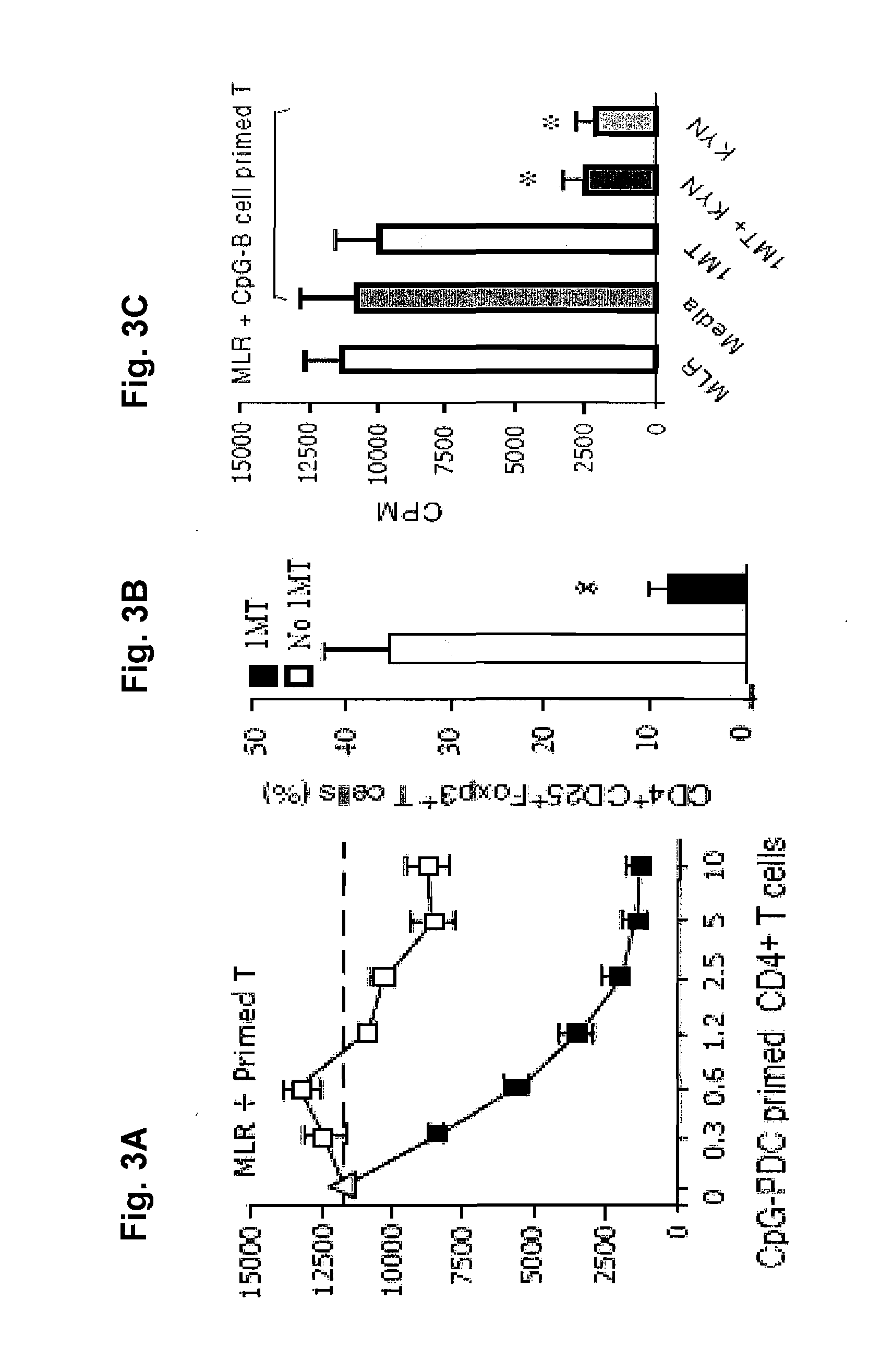Inducible Regulatory T-Cell Generation for Hematopoietic Transplants
a hematopoietic and regulatory tcell technology, applied in the direction of antibody medical ingredients, drug compositions, immunological disorders, etc., can solve the problems of reducing the effect of immune system t cells, reducing the effect of immune suppression, and reducing so as to reduce the use of immunosuppressive drugs, mildly affect the severity of immune responses, and alleviate the effect of general immune suppression and unwanted side effects
- Summary
- Abstract
- Description
- Claims
- Application Information
AI Technical Summary
Benefits of technology
Problems solved by technology
Method used
Image
Examples
example 1
Expansion of CD4+25+Tregs
[0184]It has been previously shown that using research-grade beads for extensive negative selection followed by positive selection for CD4+25+ Tregs, and expanding the Tregs with anti-CD3 / 28 microbeads+IL-2 failed to generate uniformly suppressive cells. In addition, isolation of CD4+127lo cells (CD127lo cells are approximately 10% of CD4+ T cells) followed by anti-CD3 / 28 microbead / IL2 expansion did not permit uniform suppression (FIG. 1B). Although anti-CD3 mAb loaded K562 cells modified to express an FoR (CD64) and CD86 (KT64 / 86) was superior to anti-CD3 / 28 beads for expanding cells, a high level of suppression was not uniformly seen with either approach (FIG. 1B).
[0185]Adding rapa, which is an mTOR inhibitor, (labeled as +) reduced mean expansion rates by 30-fold with beads resulting in≦10-fold mean expansion rates by day 14. Rapa added to KT64 / 86 driven cultures (FIG. 1A) reduced mean expansion by 10-fold and improved suppression, although in some instan...
example 2
Culturing CD4+25− T Cells and iTreg Generation
[0187]CD4+25− T cells, when cultured with allogeneic TLR9 activated allogeneic plasmacytoid dendritic cells (pDCs), but not B-cells, lead to the generation of iTregs, CD4+25+FoxP3+ suppressor cells (FIG. 2). It was also observed that iTregs (closed), but not T cells primed to TLR activated B cells (open squares), were potently suppressive of a naïve MLR culture (x-axis are x 104; MLR used 105 naïve T cells; FIG. 3). It was observed that iTreg generation was dependent upon the enzyme indoleamine 2,3-dioxygenase (IDO) since IDO inhibition by 1-methyl-trypt (1MT) prevented conversion (FIG. 3B). Since IDO catabolizes tryptophan into kynurenines (KYN), it is believed that iTregs can be generated in B cell cultures using KYN. As shown in FIG. 3C, KYN resulted in potent MLR suppression that was not blocked by the addition of 1MT (KYN is downstream from IDO).
[0188]While these data provide proof-of-principle that KYN supports iTreg generation, th...
example 3
iTreg Generation Using Histone Acetylation Followed By Demethylation
[0192]Recent studies have analyzed HDACi (suberoylanilide hydroxamic acid: SAHA; trichostatin A: TSA). SAHA and TSA target class I and II HDACs at μM and nM amounts, respectively (Dokmanovic, et al., 2007, Mol Cancer Res 5:981-9; Dangond et al., 1998, Biochem Biophys Res Commun 247:833-7). HDAC7 is affected by vorinostat and HDAC9 by TSA; both class IIa HDACs have been linked to FoxP3 regulation (Tao et al., 2007, Nat Med 13:1299-307; Dokmanovic et al., 2007, Mol Cancer Ther 6:2525-34). It has been observed that SAHA at 100 μM on day 0 was toxic, whereas SAHA at 300 nM on day 3 did not inhibit T cell expansion but also did not result in iTregs.
[0193]While HDACi is insufficient to result in iTregs in vitro (Tao et al., 2007, Nat Med 13:1299-307), it is believed that HDACi would be effective when used with decitibine, due to the known increase in histone methylation and deacetylation in Tregs and potential benefits of...
PUM
| Property | Measurement | Unit |
|---|---|---|
| time period | aaaaa | aaaaa |
| time period | aaaaa | aaaaa |
| time period | aaaaa | aaaaa |
Abstract
Description
Claims
Application Information
 Login to View More
Login to View More - R&D
- Intellectual Property
- Life Sciences
- Materials
- Tech Scout
- Unparalleled Data Quality
- Higher Quality Content
- 60% Fewer Hallucinations
Browse by: Latest US Patents, China's latest patents, Technical Efficacy Thesaurus, Application Domain, Technology Topic, Popular Technical Reports.
© 2025 PatSnap. All rights reserved.Legal|Privacy policy|Modern Slavery Act Transparency Statement|Sitemap|About US| Contact US: help@patsnap.com



